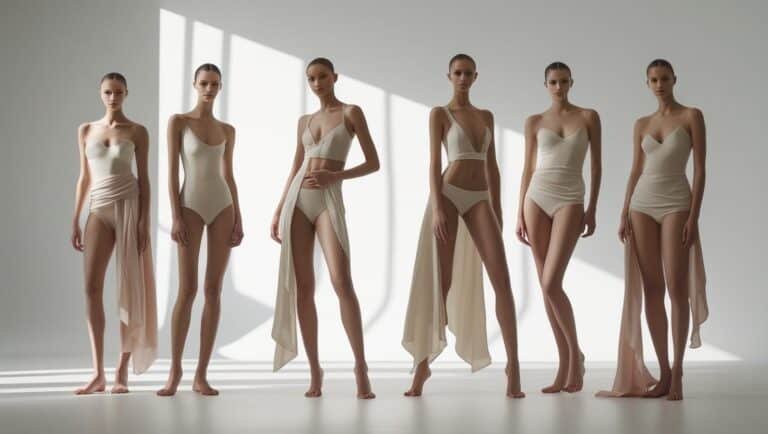The Power of Colour in Fashion: How It Shapes Style and Identity

Colour is more than just a visual element in fashion; it’s a powerful force that touches on our emotions, cultures, and personal expressions. Whether you’re drawn to the calming blues or the bold reds, colour plays a crucial role in how we experience and understand fashion. Here’s a closer look at why colour matters so much in the world of garments and style.
How Colour Affects Us Emotionally
Think about how a vibrant red dress or a serene blue sweater makes you feel. Colour has a profound impact on our emotions and can shape how we present ourselves to the world.
- Red: Red is dynamic and intense. It can boost confidence and energy, making it a popular choice for garments intended to make a statement. Imagine walking into a room in a striking red outfit; it exudes confidence and passion.
- Blue: Blue has a calming effect, evoking feelings of tranquility and trust. A classic blue suit or a soft blue blouse can make you feel poised and sophisticated, perfect for professional settings or relaxed social occasions.
- Green: Green often reminds us of nature and renewal. It can be incredibly refreshing, bringing a sense of balance and calm. Whether it’s a deep emerald coat or a light mint green scarf, green can add a touch of serenity to your wardrobe.
- Yellow: Yellow is all about joy and energy. A splash of yellow in your outfit can brighten your day and bring a sense of optimism, though it can be a bold choice that stands out.
- Black and White: Black and white are timeless. Black signifies elegance and strength, while white represents simplicity and purity. Together, they create a classic look that is both versatile and chic, ideal for a range of occasions from formal events to everyday wear.


Colour and Culture: A Historical Perspective
Colours don’t just affect us on a personal level; they also carry deep cultural and historical meanings that shape fashion trends.
- Historical Tones: In ancient times, certain colours were reserved for the elite. For example, purple was an expensive dye, often worn by royalty. This historical context helps us appreciate how colour has been a symbol of status and power throughout the ages.
- Cultural Significance: Different cultures have unique colour associations. In some cultures, black is worn for mourning, while in others, white is used. Understanding these cultural nuances helps us navigate the global fashion landscape more thoughtfully.
- Fashion Trends: Fashion colours often reflect the spirit of the times. The bold, psychedelic colours of the 1960s, for instance, mirrored the era’s counterculture movements, while the minimalistic palette of the 1990s spoke to a different kind of sophistication.
Colour Trends: Seasonal Shifts and Influences
Fashion is constantly evolving, and colour trends shift with the seasons and cultural moments.
- Seasonal Changes: Each season brings its own colour palette. Spring is often bright and pastel, reflecting renewal, while autumn embraces rich, warm hues. Winter tends to feature deeper, more intense colours. This seasonal rhythm helps keep fashion fresh and aligned with nature’s cycles.
- Pantone’s Pick: The Pantone Colour of the Year influences fashion trends significantly. This annual choice often captures the mood of the moment and inspires designers worldwide, affecting everything from runway shows to retail collections.
Colour in Fashion Design and Branding
In the world of fashion, colour isn’t just about looking good—it’s also about making a statement and building a brand identity.
- Design Impact: Designers use colour to convey a mood or message. A colour choice can transform a garment from casual to formal or from playful to serious. This creative use of colour helps designers express their vision and connect with their audience.
- Brand Identity: For fashion brands, colour is a key element in creating a recognizable identity. Think of how Chanel’s classic black and white or Tiffany & Co.’s signature turquoise colours instantly evoke their respective brands. Consistent colour schemes help brands maintain a strong, memorable presence in the market.
How Colour Influences Consumer Choices
Colour affects more than just fashion trends—it also plays a significant role in consumer behavior and preferences.
- Buying Decisions: The colour of a garment can influence whether we decide to buy it. Retailers use colour psychology to create appealing displays and online experiences. Colours that resonate emotionally or align with current trends can drive sales.
- Personal Style: Our personal colour preferences often guide our fashion choices. We’re drawn to colours that complement our skin tones and reflect our individual styles. This personal connection to colour helps us express who we are through our clothing.
- Cultural Trends: As societal values shift, so do colour trends. The rise in eco-conscious fashion has led to an increased interest in sustainable and natural dyes, influencing the colour choices we see on the runway and in stores.
Practical Aspects of Colour in Fashion
Beyond the emotional and cultural impacts, colour also has practical implications in fashion design and production.
- Fabric and Dye Technology: Advances in dyeing techniques have expanded the range of colours available to designers. These innovations allow for more vibrant, long-lasting hues, giving designers greater freedom to experiment with colour.
- Colour Matching: Ensuring consistent colour across different fabrics and production batches is crucial. Designers and manufacturers use precise colour matching techniques to maintain the integrity of their designs.
- Durability and Maintenance: Some colours are more prone to fading or staining. Designers must consider how practical their colour choices are, especially for garments intended for everyday wear.








